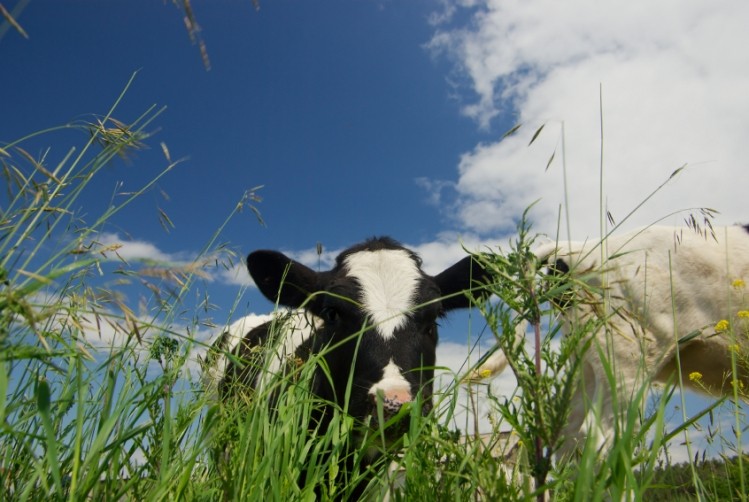Organic meat & dairy has more omega-3 but amounts aren't 'nutritionally relevant'

The researchers, who published the meta-analysis in the British Journal of Nutrition, reviewed 196 publications comparing the nutritional content of milk, of which 170 were peer-reviewed, and 67 for organic and conventionally produced meat products.
According to co-author, Carlo Leifert, from the University of Newcastle, the review shows "without doubt" that there are composition differences between organic and conventional food. "Taken together, the three studies on crops, meat and milk suggest that a switch to organic fruit, vegetables, meat and dairy products would provide significantly higher amounts of dietary antioxidants and omega-3 fatty acids," he said.
“[For milk] there were no significant differences in total saturated fatty acid and monounsaturated fatty acid concentrations between organic and conventional milk. However, concentrations of total polyunsaturated fatty acids and omega-3 polyunsaturated fatty acids were significantly higher in organic milk, by an estimated 7% and 56%, respectively,” write the authors. “It is concluded that organic bovine milk has a more desirable fatty acid composition than conventional milk.”
However the meta-analysis also showed that organic milk contains less iodine, with the authors suggesting a daily consumption of half a litre of conventional milk would provide 88% of the UK recommended daily iodine intake of 140 µg whilst consuming the same amount of organic milk would only provide 53%.
For many nutritionally relevant compounds such as minerals, antioxidants and individual fatty acids (FA), the authors say the evidence base was too weak for meaningful meta-analyses, but that significant difference in fatty acid profiles were detected when data from all animals were pooled. “Concentrations of saturated fatty acids and monounsaturated fatty acids were similar or slightly lower, respectively, in organic compared with conventional meat. Larger differences were detected for total polyunsaturated fatty acids and omega-3 polyunsaturated fatty acids, which were an estimated 23% and 47% higher in organic meat, respectively,” they write.
Health benefits ‘unlikely’
However, professor of food chain nutrition at the University of Reading, Ian Givens, said the use of percentage increase measurements to evaluate nutritional differences can have the effect of implying a greater change than is nutritionally relevant.
“Overall, this is very detailed and valuable work, but the differences between organic and conventionally farmed produce should be evaluated as part of the whole human diet. When they are, most differences are very small indeed.”
“Much emphasis is placed on the 56% higher omega-3 fatty acid content of the organic milk; but this increase is in the milk fat, not in the whole milk. The effect also needs to be assessed in the whole diet. On average we consume about 2.2 g of omega-3 fatty acids per day. Switching from conventional to organic milk would increase omega-3 intake by about 33 mg per day – an increase of only 1.5% in our total diet. Such small changes are unlikely to represent any nutritional or health benefit,” he said.
Choice of feed important
Meanwhile, the nutritional benefits that are there - however small - have been attributed to the choice of feed used rather than organic methods per se, said Givens. “Differences in content such as fatty acids or iodine occur primarily because organic animals are fed more of a forage-based diet, such as grass, than their non-organic counterparts. You get the same kind of changes in food composition if non-organic animals are fed forage-rich diets too. It’s the choice of feed, not the organic farming method, which makes the difference.”
Organic standards stipulate that animals' diet must contain 60% fresh grass or conserved grass (hay or silage) that is high in clover. The clover, used in place of chemical fertilisers to fix nitrogen, is said to be responsible for increasing the omega-3 concentrations in meat and milk.
But while a grass- and clover-based diet is not limited to organic animals, a spokesperson for the Soil Association told FoodNavigator the only way for almost all consumers to know what an animal has been fed is to look for the organic label to ensure the meat, milk, butter, cheese or cream has been independently inspected and certified as organic.
Helen Browning, CEO of the UK’s organic certification body Soil Association, said: "What you feed farm animals and how you treat them affects the quality of the food - whether it’s milk, cheese or a cut of meat. These scientists have shown that all the hard work organic farmers put into caring for their animals pays off in the quality of the food they produce."
Source: British Journal of Nutrition
First published online 16 February 2016, doi.org/10.1017/S0007114515005073
“Composition differences between organic and conventional meat: a systematic literature review and meta-analysis.”
Authors: Dominika Średnicka-Tober, Marcin Barański, Chris Seal et al.
Source: British Journal of Nutrition
First published online 16 February 2016, http://dx.doi.org/10.1017/S0007114516000349
“Higher PUFA and n-3 PUFA, conjugated linoleic acid, α-tocopherol and iron, but lower iodine and selenium concentrations in organic milk: a systematic literature review and meta- and redundancy analyses.”
Authors: Dominika Średnicka-Tober, Marcin Barański, Chris J. Seal et al.















